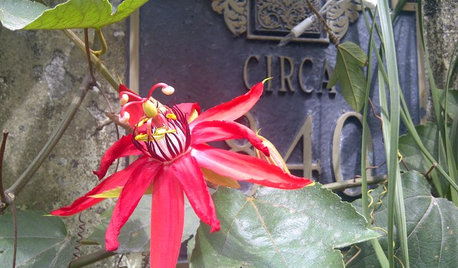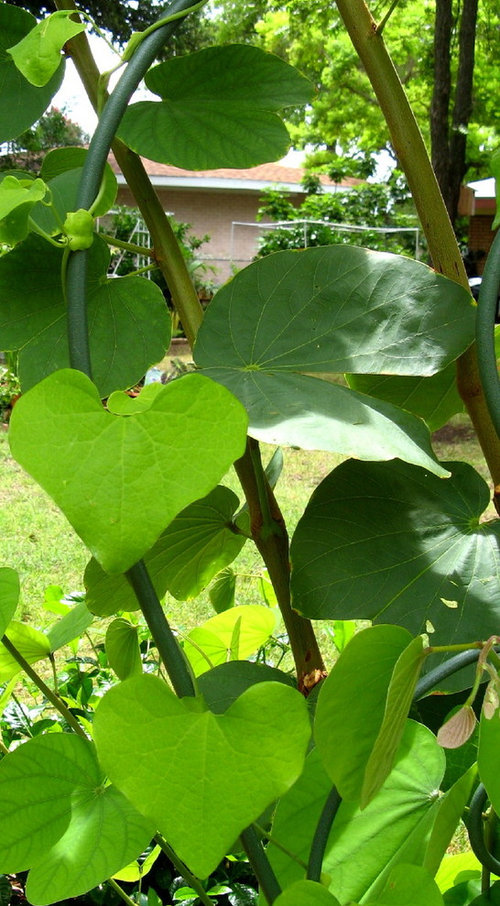ID pipe vine from Sunnysa's yard?
roselee z8b S.W. Texas
9 years ago
Related Stories

FLOWERS5 Sensational Flowering Vines for Warm Climates
Splash your garden with bright tropical color from late summer through fall with these showy trailing and climbing beauties
Full Story
URBAN GARDENSFrom Concrete ‘Jail Yard’ to Lush Escape in Brooklyn
Once stark and uninviting, this urban backyard is now a welcoming retreat for relaxing and entertaining
Full Story
LANDSCAPE DESIGNSee 5 Unexpected Ways to Use Vines
Vines can grow over slopes, trail off pergolas and add seasonal color to the garden
Full Story
FENCES AND GATESA Designer Uses PVC Pipe to Cast a Modern Garden Gate
Landscape designer Scot Eckley walks us through the process of creating a custom aluminum ring gate
Full Story
LIFEThe Polite House: How Can I Tell a Construction Crew to Pipe Down?
If workers around your home are doing things that bother you, there’s a diplomatic way to approach them
Full Story
PINK FLOWERSGreat Design Plant: Pink Trumpet Vine Heralds Vibrant Color
Announce your landscape beautification efforts with this flowering vine that perks up hot, dry gardens
Full Story
EXTERIORSCare and Training for a Vine-Covered Home
Love the look but don’t want the ruin? Learn how to have vine-draped walls without all the cracks and crumbling
Full Story
MOST POPULAR16 Ways to Get More From Your Small Backyard
Make a tight or awkward yard a real destination with these design tricks from the pros
Full Story
GARDENING GUIDESSmall Gem Lawns: More Impact From Less Grass
Instead of letting the lawn sprawl, make it a shapely design element in your yard. You’ll reap benefits both practical and aesthetic
Full Story
GARDENING AND LANDSCAPINGSee a Soothing Backyard Bathhouse Born From a Salvaged Tub
Creative thinking and DIY skills give a Portland couple a pergola-covered 'hot tub' under the stars
Full StoryMore Discussions








jolanaweb
sunnysa
Related Professionals
Windham Landscape Architects & Landscape Designers · East Rancho Dominguez Landscape Architects & Landscape Designers · Cockeysville Landscape Contractors · Federal Way Landscape Contractors · Holtsville Landscape Contractors · Lake Saint Louis Landscape Contractors · Mastic Beach Landscape Contractors · New Cassel Landscape Contractors · Pahrump Landscape Contractors · St. Louis Landscape Contractors · Wayland Landscape Contractors · Yuba City Landscape Contractors · Markham Landscape Contractors · Safety Harbor Window Contractors · Sudbury Window Contractorsjolanaweb
roselee z8b S.W. TexasOriginal Author
sunnysa
roselee z8b S.W. TexasOriginal Author
Vulture61
wantonamara Z8 CenTex
sunnysa
wantonamara Z8 CenTex
Lin barkingdogwoods
roselee z8b S.W. TexasOriginal Author
Vulture61
bostedo: 8a tx-bp-dfw
beachplant
Yadda
sunnysa
wantonamara Z8 CenTex
roselee z8b S.W. TexasOriginal Author
wantonamara Z8 CenTex